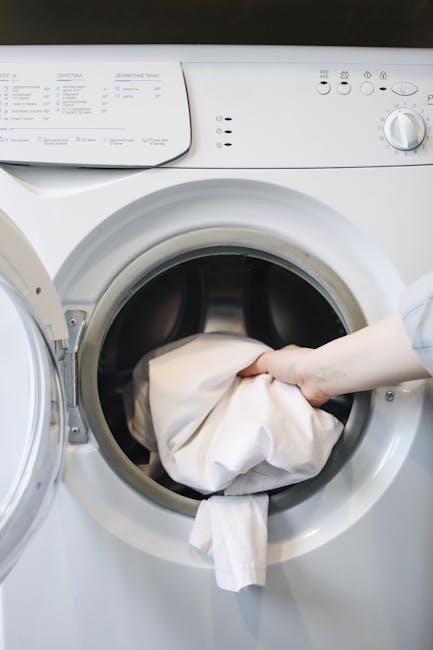The Cessna 172 flight manual is a comprehensive guide for pilots, providing essential information on aircraft systems and
operational procedures
in a clear and concise manner always․
Overview of Cessna 172 Aircraft
The Cessna 172 is a single-engine aircraft widely used for flight training and personal flying, with a reputation for being stable and easy to handle․
It has a cruising speed of around 140 knots and a range of approximately 800 nautical miles, making it suitable for cross-country flights․
The aircraft is equipped with a Lycoming IO-360-L2A engine, producing 180 horsepower, and features a fixed tricycle landing gear and a cantilever wing․
Its design and construction make it an ideal choice for student pilots, as it is forgiving and allows for a smooth learning experience․
With its spacious cabin and comfortable seating, the Cessna 172 is also a popular choice for recreational flying and travel․
Overall, the Cessna 172 is a reliable and versatile aircraft, making it a great option for both training and personal use, and its popularity can be seen in its widespread use around the world․
Its durability and performance have made it a favorite among pilots and flight schools, and it continues to be a leading choice in the aviation industry․
The Cessna 172’s design has undergone several updates and improvements over the years, with various models offering different features and capabilities․
Importance of Flight Manual for Cessna 172
The flight manual is a critical component for Cessna 172 pilots, providing essential information on aircraft operation and maintenance․
It serves as a reference guide, outlining standard operating procedures, emergency procedures, and performance characteristics․
The manual is designed to help pilots understand the aircraft’s systems, limitations, and handling characteristics, ensuring safe and efficient operation․
By following the guidelines and recommendations outlined in the manual, pilots can minimize risks and optimize flight performance․
The flight manual is also a valuable resource for flight instructors, allowing them to provide comprehensive training and guidance to students․
Regular updates and revisions to the manual ensure that pilots have access to the latest information and procedures, reflecting changes in regulations, technology, and best practices․
Overall, the Cessna 172 flight manual plays a vital role in promoting safe and responsible flying practices, and its importance cannot be overstated․
It is an indispensable tool for pilots, instructors, and maintenance personnel, providing a foundation for effective and efficient aircraft operation․
The manual’s significance extends beyond the cockpit, contributing to the overall safety and integrity of the aviation industry․
Cessna 172 Flight Training Options
Training options include Part 141 and Part 61 programs with different requirements always available online․
Part 141 vs Part 61 Flight Training
The main difference between Part 141 and Part 61 flight training is the structure and flexibility of the program․ Part 141 programs are more rigid and have a set syllabus, whereas Part 61 programs offer more flexibility in how training develops․ This difference can be important for students who have different learning styles or needs․ Part 141 programs are often more intensive and have lower flight hour requirements, which can be beneficial for students who want to complete their training quickly․ On the other hand, Part 61 programs can be more suitable for students who need to balance their training with other responsibilities․ It is recommended that students research and understand the differences between these two programs before making a decision․ By considering their individual needs and goals, students can choose the program that best suits them and helps them achieve their objectives in becoming a proficient pilot․
Benefits of Each Training Option
Each training option has its own benefits, and students should consider these when choosing a program․ Part 141 programs offer a more structured approach, which can be beneficial for students who thrive in a disciplined environment․ These programs also often have lower flight hour requirements, which can be cost-effective for students․ On the other hand, Part 61 programs offer more flexibility, which can be beneficial for students who need to balance their training with other responsibilities․ Additionally, Part 61 programs can be more suitable for students who want to learn at their own pace․ By considering the benefits of each option, students can make an informed decision and choose the program that best suits their needs and goals․ Overall, both options can be effective, and the key is to find the one that works best for the individual student․ This will help them achieve their objectives and become a proficient pilot․
Cessna 172 Aircraft Maintenance
Cessna Service Stations provide maintenance manuals and support publications for Cessna airplanes always ensuring safety and efficiency in aircraft maintenance procedures are followed correctly always․
Cessna Service Stations and Maintenance Manuals
Cessna Service Stations have all the current maintenance manuals and illustrated parts catalogs for Cessna airplanes, including the Cessna 172․ These stations provide a wide range of services, from routine maintenance to major repairs, and are equipped with the latest tools and technology to ensure that all work is done efficiently and effectively․ The maintenance manuals provided by Cessna Service Stations are comprehensive and detailed, covering all aspects of aircraft maintenance, including inspection, repair, and replacement of parts․ They also provide information on troubleshooting and fault diagnosis, making it easier for maintenance personnel to identify and fix problems quickly․ Additionally, Cessna Service Stations have access to a wide range of support publications, including service bulletins and technical advisories, which help to ensure that all maintenance work is done in accordance with the latest regulations and standards․ Overall, Cessna Service Stations play a critical role in maintaining the airworthiness of Cessna 172 aircraft․
Importance of Regular Maintenance for Cessna 172
Regular maintenance is crucial for the safe and efficient operation of the Cessna 172 aircraft․ It helps to prevent mechanical failures, reduces the risk of accidents, and ensures that the aircraft remains airworthy․ A well-maintained Cessna 172 will also perform better, with improved fuel efficiency and reduced emissions․ The maintenance schedule outlined in the flight manual should be followed carefully, with regular inspections and checks carried out to identify any potential problems․ This includes tasks such as oil changes, tire pressure checks, and propeller inspections․ By staying on top of maintenance, pilots can help to extend the life of the aircraft, reduce downtime, and minimize repair costs․ Furthermore, regular maintenance is also a regulatory requirement, and failure to comply can result in serious consequences, including fines and penalties․ Overall, regular maintenance is essential for the safe and successful operation of the Cessna 172․
Cessna 172 Flight Operations
Flight operations involve pre-flight checks and
procedures
to ensure safe and successful flights always using manuals․
Cessna 172 Checklist for Student Pilots
The Cessna 172 checklist is a vital tool for student pilots, providing a systematic approach to pre-flight, start-up, and shutdown procedures․ A generic Cessna 172 Skyhawk checklist is available for student pilots, covering both carburetor and injection systems․ This checklist is designed to ensure that all necessary steps are taken to prepare the aircraft for safe flight․ By following the checklist, student pilots can develop good habits and a consistent approach to flight operations․ The checklist covers critical items such as control locks, fuel selectors, and ignition switches․ It also includes procedures for engine start-up, taxi, and run-up․ Additionally, the checklist provides a framework for post-flight procedures, including shutdown and securing the aircraft․ By using a comprehensive checklist, student pilots can reduce the risk of errors and improve their overall safety and proficiency․ Regular use of the checklist will help student pilots to develop a high level of competence and confidence in their abilities․ The Cessna 172 checklist is an essential resource for student pilots, and its use is highly recommended․
Pilots Manual and Operating Handbook
The Pilots Manual and Operating Handbook is a critical component of the Cessna 172 flight manual, providing detailed information on aircraft systems, operating procedures, and performance characteristics․ This manual is designed to be used in conjunction with the flight manual, and provides a comprehensive guide to the safe and efficient operation of the Cessna 172․ The manual includes information on aircraft limitations, normal and emergency procedures, and performance data․ It also covers topics such as weather, navigation, and communication․ The Pilots Manual and Operating Handbook is an essential resource for pilots, and is intended to be used as a reference guide during flight training and operation․ The manual is regularly updated to reflect changes in aircraft design, operating procedures, and regulatory requirements․ By following the guidelines and procedures outlined in the manual, pilots can ensure safe and efficient operation of the Cessna 172․ The manual is available in multiple languages, including English and Spanish․
























